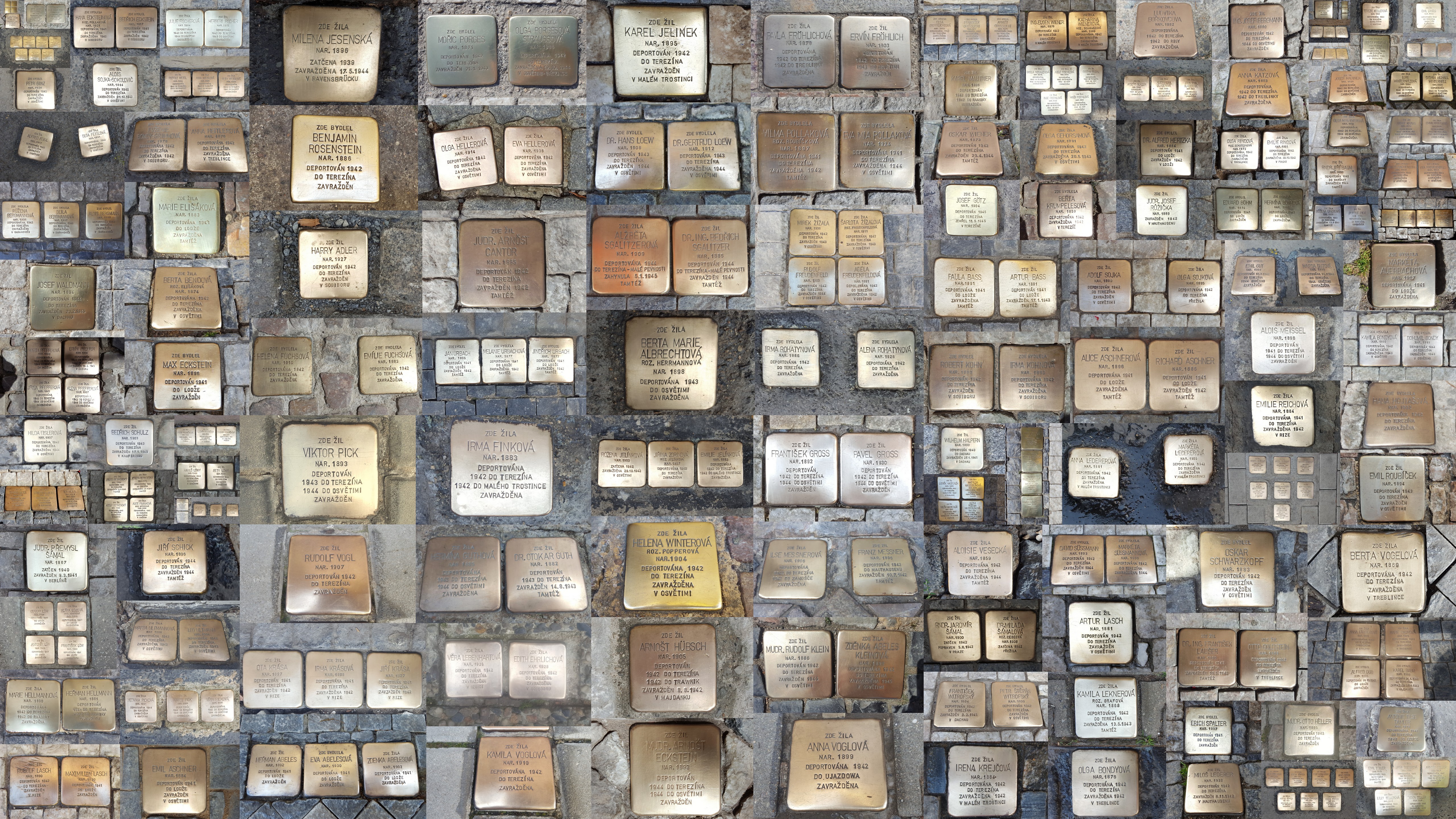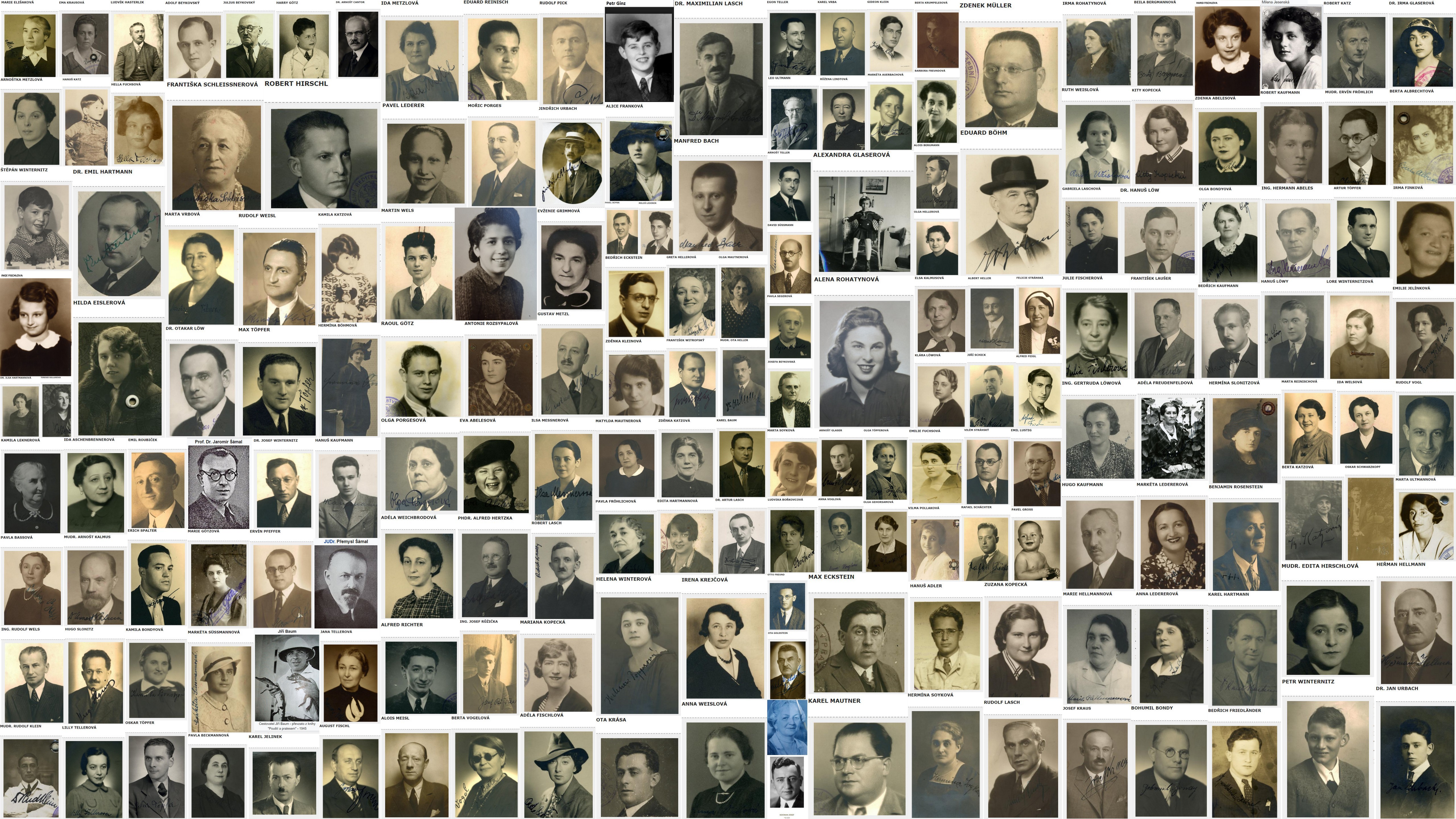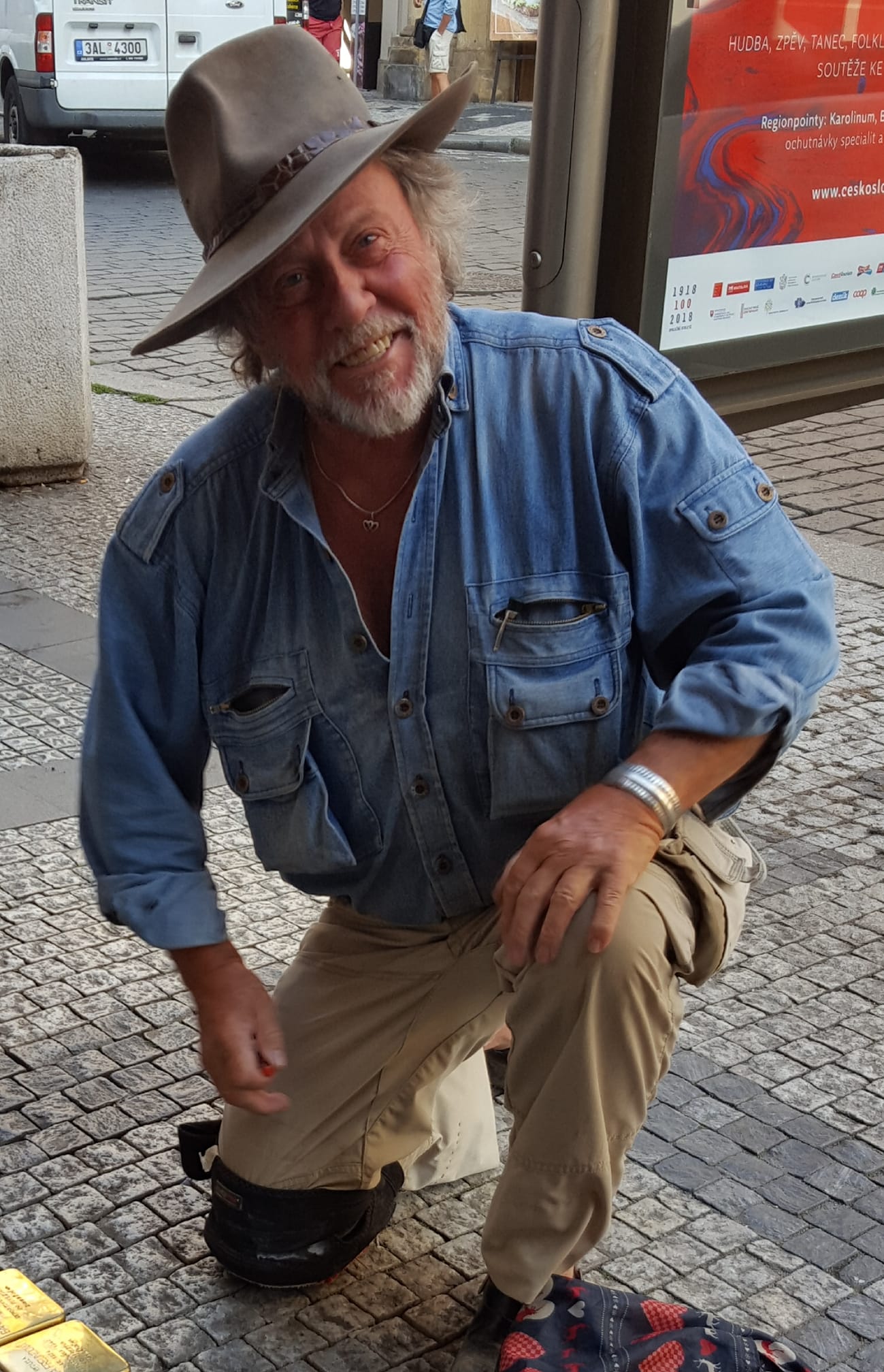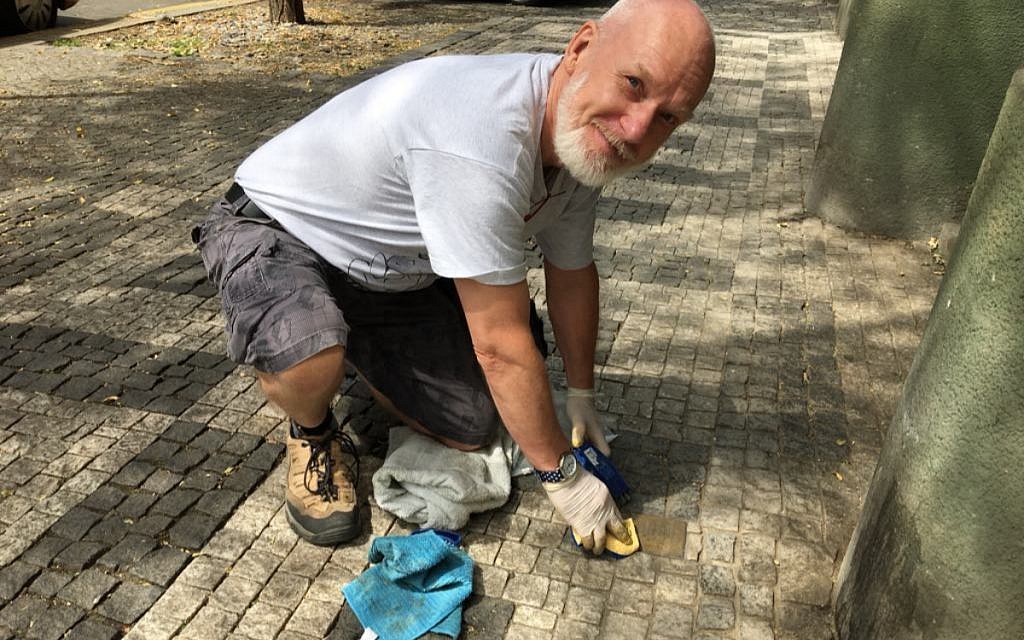Meet the British expat in Prague who cleans Shoah stones to preserve memories
Retired engineer Trevor Sage, came across the “stumbling stones” while on a tour of his adopted city. Here he recalls how he got involved in cleaning them
A British expat in Prague has taken to cleaning hundreds of Holocaust memorial stones dotted around the city because dirt and grime meant the people they commemorate “were disappearing for a second time”.
Trevor Sage, 59, a retired engineer born in Finchley, emigrated in 2006 after his wife died, and first happened across the Stolpersteine or “stumbling stones” by German artist Gunter Demnig while on a tour of his adopted city. His story was covered by the BBC, including on Emma Barnett’s programme earlier in April.
Here, he recalls how he got involved and why he does it:
__
Get The Jewish News Daily Edition by email and never miss our top stories Free Sign Up
My knowledge of the Holocaust was limited to what I knew from watching films and TV documentaries, but leapt when I took a tour of Theresienstadt with a guide (Pavel Stránský) who had survived Terezin and Auschwitz. Years later I was walking around Prague with a Czech friend who pointed out some hand-made memorial plaques set into the pavement.
He explained they were called Stolpersteine. Czechs call them the “stones of the disappeared”. They commemorate the Nazis’ victims, including Jews, LGBT, Roma, Sinti, resistance fighters, political prisoners and the disabled. The first Stolperstein was installed in Berlin in 1996. Today there are over 70,000 in 2,000 towns and cities across 24 European countries. Sweden and Denmark will be added later this year. It is the world’s largest decentralised memorial. Most are installed by the German artist Gunter Demnig, whose idea it first was, usually at the entrance to the person’s house.

The first Stolperstein in Prague was installed in 2008, dedicated to Max Eckstein. As I walked round, I saw that many were difficult to read through being dirty and tarnished. I was saddened to think the names were disappearing for a second time, under the grime of the pavements. I wanted to revive them but, not being Czech, I wasn’t sure it was my place to interfere.
Then, in July last year, I saw a Facebook post about a man named Gerhard Geier from Salzburg. He had cleaned all 388 Stolpersteine in his city. It inspired me to do the same in Prague. Like Gerhard, I am not Jewish, nor do I have any family connection to the Holocaust. I just felt a compulsion to help preserve the memory of the victims.
Being retired, I have plenty of time, so I set about trying to find the whereabouts of every Stone. I trawled the internet but couldn’t find the original plotted map of Prague’s Stolpersteine, so I decided to make my own, using websites like Wikipedia. I located 284 Stolpersteine, plotted the location of each one on a Google map and set about cleaning them.

I had cleaned around 70 Stones when a lady named Jitka Hejtmannova stopped to talk to me and ask what I was doing. I explained. She too a photo and posted it on Facebook. Soon it had over 1,000 ‘likes’ and 800 shares, including by the British Embassy. Strangers wrote, expressing their gratitude. Others wanted more information. Even those living in Prague had no idea the Stolpersteine existed. I set up a Facebook page, posting pictures of the Stones before and after cleaning. I also started collecting photos of the individuals. Some were sent to me by relatives. Today there are faces for 195 of the 311 Stolpersteine.

I am touched by every stone I clean. It is especially emotional when it is dedicated to a child. I can’t help but imagine what may have become of them had their life not been so cruelly taken. There are 30 Stones to victims aged 16 or younger. The youngest – Jindra Pfeffova – was two when she was murdered in Auschwitz. The eldest – Berta Krumpelesova – was 83 when she was murdered in Terezin.
Every month I post a list of all the people who have a Stolperstein in Prague and a birthday in that month. I will visit a number of the Stones to clean them and lay a flower or light a candle. For some victims we know little about their lives, for others we are able to piece a lot together from online archives. I research what I can and post their story on my page, usually on their birthday.
Today there are 311 Stolpersteine around Prague. Another 41 will be installed in September 2019 and a further 40 in 2020. I have plotted each one and linked it to that person’s record and photos of them. I feel I am paying tribute to them in a small way, as well as making a personal connection and giving something back to the city I love.
Czech children help me clean the Stones and learn about the people. Last month I asked for help to clean all 311 Stones in time for Yom Ha’Shoah on 2 May and had 50 volunteers in six days, including the Israeli ambassador. I feel that by cleaning the Stolpersteine, they will be more visible, people will notice them and hopefully take a moment to lower their head and read the inscription. After all, as the Talmud says: “A person is forgotten only when one no longer remembers their name.”
How expat Trevor honours Holocaust victims
A British man is cleaning 311 brass plaques on the streets of Prague, installed in memory of the city’s Holocaust victims.
פורסם על ידי BBC Radio 5 live ב- יום חמישי, 11 באפריל 2019

Thank you for helping to make Jewish News the leading source of news and opinion for the UK Jewish community. Today we're asking for your invaluable help to continue putting our community first in everything we do.
For as little as £5 a month you can help sustain the vital work we do in celebrating and standing up for Jewish life in Britain.
Jewish News holds our community together and keeps us connected. Like a synagogue, it’s where people turn to feel part of something bigger. It also proudly shows the rest of Britain the vibrancy and rich culture of modern Jewish life.
You can make a quick and easy one-off or monthly contribution of £5, £10, £20 or any other sum you’re comfortable with.
100% of your donation will help us continue celebrating our community, in all its dynamic diversity...
Engaging
Being a community platform means so much more than producing a newspaper and website. One of our proudest roles is media partnering with our invaluable charities to amplify the outstanding work they do to help us all.
Celebrating
There’s no shortage of oys in the world but Jewish News takes every opportunity to celebrate the joys too, through projects like Night of Heroes, 40 Under 40 and other compelling countdowns that make the community kvell with pride.
Pioneering
In the first collaboration between media outlets from different faiths, Jewish News worked with British Muslim TV and Church Times to produce a list of young activists leading the way on interfaith understanding.
Campaigning
Royal Mail issued a stamp honouring Holocaust hero Sir Nicholas Winton after a Jewish News campaign attracted more than 100,000 backers. Jewish Newsalso produces special editions of the paper highlighting pressing issues including mental health and Holocaust remembrance.
Easy access
In an age when news is readily accessible, Jewish News provides high-quality content free online and offline, removing any financial barriers to connecting people.
Voice of our community to wider society
The Jewish News team regularly appears on TV, radio and on the pages of the national press to comment on stories about the Jewish community. Easy access to the paper on the streets of London also means Jewish News provides an invaluable window into the community for the country at large.
We hope you agree all this is worth preserving.
-
By Laurent Vaughan - Senior Associate (Bishop & Sewell Solicitors)
-
By Laurent Vaughan - Senior Associate (Bishop & Sewell Solicitors)
-
By Laurent Vaughan - Senior Associate (Bishop & Sewell Solicitors)
-
By Laurent Vaughan - Senior Associate (Bishop & Sewell Solicitors)






















